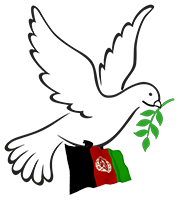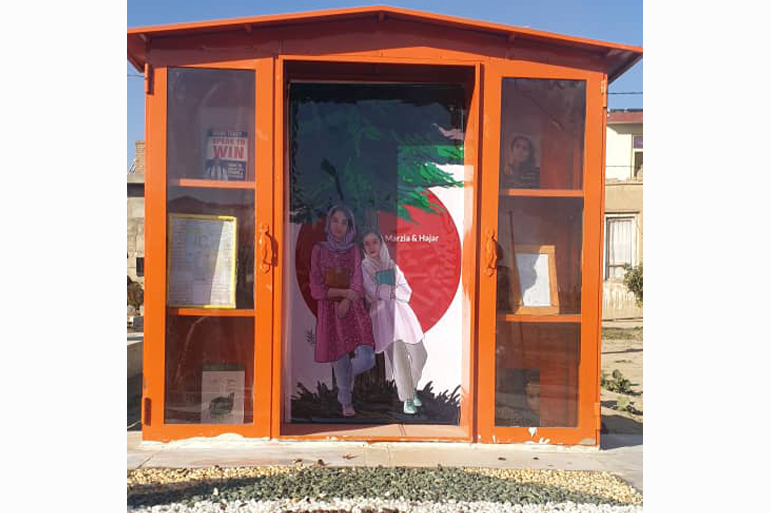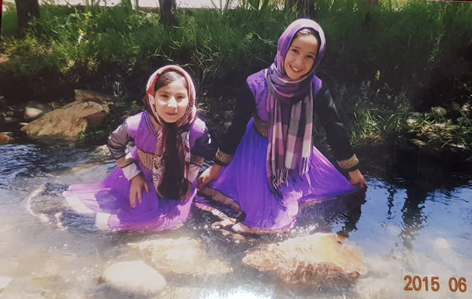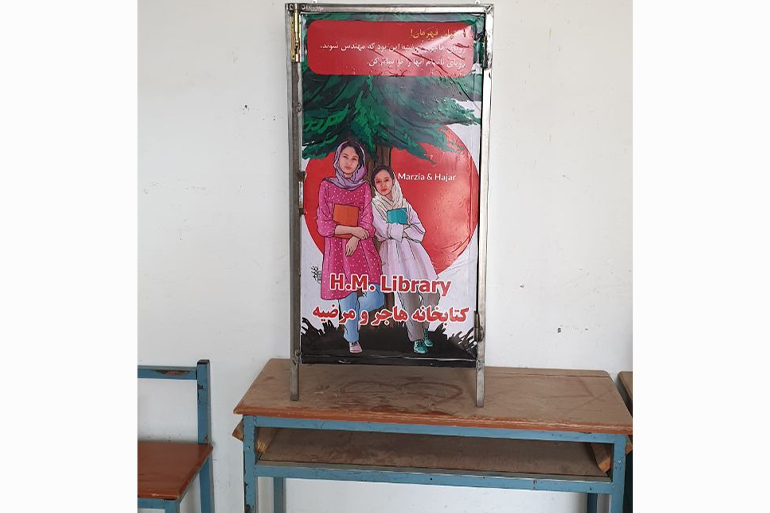Afghanistan Analysts Network
Nawruz, or New Day, which coincides with the first day of spring and the start of the solar hejri year, is an ancient tradition long celebrated in Afghanistan (see AAN report on the history of Nawruz here). In the approach to Afghanistan’s second Nawruz under Taleban rule, we wanted to find out if and how people from across the country plan to mark the occasion. This report is based on unstructured interviews with nine people from across Afghanistan – five women and four men between the ages of 26 and 63 – and provides poignant insights into their feelings and experiences for their second new year living under Taleban rule. Their moving responses reveal not only the endurance of joy amid overwhelming disappointments but also the Afghan people’s deep conviviality and humanity.
Nawruz 1402: A lacklustre celebration
“The Nawruz atmosphere is even more diminished than it was last year.” This sentiment expressed by a 32-year old woman we spoke to in Nili, the centre of Daikundi province in central Afghanistan, was echoed by everyone we spoke to about the coming Nawruz.[1] This year “isn’t like previous ones [before the Taleban return to power],” a woman we spoke to in Mazar-e Sharif, the traditional epicentre of Nawruz celebration, told AAN. People from all over Afghanistan used to travel to Mazar in northern Afghanistan for the Janda Bala (flag hoisting) ceremony which was traditionally held at the city’s Rawza-ye Mubarak Shrine, but the Taleban cancelled it last year, a few months after they came to power. “In the past, the city was bustling in these days. People would come here from every corner of Afghanistan [to celebrate Nawruz]. There’s no such thing this year… In the nights around Nawruz, the youth would roam around, playing music, singing and dancing on the streets,” she said. Other people we spoke to had shared smiliar stories, such as a 38-year old woman in Paktia who told us about Nawruz celebrations in Gardez city, the centre of this south-eastern province: “[Before the fall of the Republic] the state and civic activists organised colourful celebrations. They strung up lights in Gardez city, the bazaar was bustling and people bought dried fruit and other things for Nawruz. There were concerts and people went [for picnics] to green areas with their families. The youth danced the atan [traditional dance] and sang. They cooked their food in the open air. In the past, the youth, families and even we the teachers went to picnics, but there are no such things this year.”
One key reason is that the Taleban practically outlawed Nawruz after their return to power some one year and seven months ago. First, by removing Nawruz as a public holiday, which means that the state and its numerous institutions must remain open, making it tricky for civil servants to justify taking the day off work for Nawruz. Second, by forbidding public ceremonies to celebrate Nawruz. The 63-year-old man in Kandahar city, for instance, spoke movingly about the sorrow he felt from this ban on customary celebrations at the shrines in Kandahar province, as did the woman in Nili who lamented the ban on celebrations during the blooming of almond trees in Daikundi province, where she took a very active part in organising the popular Jashn-e Gul-e Badam (Almond Blossom Festival).
The effective outlawing of Nawruz emanates from the belief by the Taleban that because Nawruz is a pre- and un-Islamic tradition, it must not be celebrated and must have no place in Afghanistan’s society.[2] As such, the Taleban do not recognise Nawruz at all, neither as the beginning of the solar hejri calendar year nor as the first day of the spring. The new solar hejri calendar year 1402, which is the most commonly used calendar across the country, falls within the lunar hejri calendar years 1444/1445 and the Georgian calendar years 2023/2024. When top officials of the Islamic Emirate launched a second sapling-planting campaign on 5 March 2023 under the motto “piruzi wa taraqqi” (“victory and progress”) as they did around this time last year under the motto “nahal-e azadi” (“sapling of freedom”), they referred to the coming of the season of the spring as the occasion for the planting campaign, not to the approaching Nawruz. Furthermore, Nawruz had already been dropped as an occasion for celebration from the Islamic Emirate’s official calendar (taqwim-e rasmi).[3] Our interviewee from the northern city of Sheberghan, the centre of Jawzjan province, spoke about how pro-Taleban and like-minded muftis and mullahs have propagated the idea of Nawruz being ‘un-Islamic’ and thus forbidden it over the years in the province.[4]

The prohibition on public Nawruz celebrations is not the only reason for the diminished festive spirit in Afghanistan, where people have been experiencing a host of other crippling challenges. The Emirate’s restrictions on the participation of women in the public sphere make it difficult and dispiriting for women even as part of families to go out for picnics for Nawruz. This has increasingly turned picnics into not only all-male affairs but also occasions for state intervention and surveillance. All our interviewees were unanimous in saying that women and families generally preferred not to celebrate Nawruz with picnics because they “are afraid of being harassed or of facing some inappropriate treatment by those now in charge,” as the woman from from Nili city put it. “People are fearful. They think that if they have some plan to celebrate the new year, they might face threats or dangers. For this reason, no one dares to have such a plan,” echoed the interviewee from Ahmadabad district of Paktia. The 38-year-old man we spoke to in Sheberghan, Jawzjan province said that when he and his colleagues went on a Friday picnic recently, they “didn’t see a single family going out to have fun on our way from Sheberghan city to Qush Tepa district. It was all young men coming on their motorcycles or in their cars.” The interviewee from Kandahar city said that a city park had been allocated to women visitors only for one day a week and that those “people who have land and garden [of their own], they’ll go there [to their own property to celebrate Nawruz] with their families.” In Kabul, we spoke to a 28-year-old woman who recalled the times when women and girls went to picnics along with their families in parks and green hills around Nawruz fondly, but said sorrowfully that “[now] women don’t have the permission even to breathe.”
Another woman, a 28-year-old from Herat city in the north-west, said:
Going on picnics on Fridays [around Nawruz] has become less frequent. Few families go out to enjoy the coming of the spring. Those who go are all men. Women don’t go. It’s because there are now restrictions for women to go on a picnic. They can’t speak and laugh. Hijab has also become strict.
The economic crisis has also dampened the Nawruz spirit. Many families are struggling to find their daily food, never mind buying new clothes or other things from the bazaar. “There are families who have nothing to eat. We have neighbours who struggle hard to make a meagre living. People were forced to sell whatever they had. Many people sold their houses and other possessions to buy food,” the interviewee from Kabul city described poignantly.
A 45-year-old man from Jurm district of Afghanistan’s north-easternmost province, Badakhshan, said:
Poverty and unemployment are problems that have taken the Nawruz spirit from the people. People are in need of their food for the day. Currently there are people who have to borrow their food such as tea, flour and rice so that their families don’t go hungry. They borrow and they barter, because people have run out of cash. When they borrow, they do so at an interest, sometimes returning double [the amount borrowed] to the shopkeeper. When they get one kilo of something, they must return two kilos later. People live their lives with great difficulty. The dignity and splendour of the past are all gone this year.
The deteriorating poverty is exacerbated by the Taleban ban on women work, for example, in national and international non-governmental organisations, which is affecting household economies and the lives of women and their families across the country. Added to this is a growing frustration and a sense of foreboding about whether girls above grade 6 will be allowed to go back to school and female students to university in the new year. The woman from Nili city summed up these debilitating difficulties:
Right now, poverty reigns in the neighbourhood, city and province I live in. Few families can celebrate Nawruz. Most simply can’t afford it. They have almost no spirit of Nawruz this year. Nawruz meant the opening of schools for all, girls in particular. It was like having two festivals: Nawruz and going back to school. Families whose daughters are in grade 6 or 5 or even 4 are anxious and worried about the future of their daughters. Girls above grade 6 don’t have permission to go to school at all. The families who have such school-going girls [above grade 6] have lost this simple joy of seeing their daughters go back to school and the others are worried about the future of their daughters.
The ban on women working has created many problems. In Nili and in Daikundi overall, many women worked for NGOs and they had become the breadwinners and supporters of their families. These women have now lost their jobs and their incomes. This has not only impacted Nawruz celebrations but also the overall lives of these women and their families.
Nevertheless, almost all our interviewees said that at least some people would celebrate Nawruz, mostly at home. They referred to routine activities for this period of the year that they would undertake anyway, such as completely tidying up one’s house by cleaning and washing carpets and curtains, planting saplings and flowers; arranging courtyards and gardens; and, also, visiting relatives and friends as they would do at any other Nawruz. Those who could afford would also be preparing delights at or around Nawruz, such as haft miwa (a mixture of seven fruits soaked in water some days before Nawruz) or special rice dishes such as landi palaw (dried mutton with rice) in Kandahar city or sabzi palaw (herbed rice) in Mazar-e Sharif. Women take a leading role in planning all these preparations around the time of Nawruz.
There will therefore certainly be simple pleasures amidst great frustrations: “[a] small celebration at home,” in the words of the interviewee from Nili city, and “[celebrating] local Nawruz traditions inside … houses and gardens,” in the words of the interviewee from Kandahar city. “My son is engaged. We’ve bought something for Nawruz and we’ll take it in the coming week. In the days of Nawruz, families whose sons are engaged take fish dishes and sweets to the families of their daughters-in-law. Currently fish-cooking and confectionery shops are bustling in the bazaar. Although we make our sweets ourselves at home, there are some people who buy from the bazaar,” said the interviewee from Jurm district. “We have a saying here: start the year happily and then you’re happy the whole year!” summed up a man from Nawmish district of Helmand province to whom we spoke.

Additionally, this year’s Nawruz coincides with the fasting month of Ramadan, which also brings with it a host of special traditions. The start of Ramadan, the ninth month of the lunar hejri calendar, falls most probably two days after Nawruz in the new solar hejri year. Several of our interviewees, mostly female, even in contrast to Nawruz, expressed the coming of Ramadan as “a good feeling” as they and their families would coordinate an entire month collectively, especially by planning and preparing the sahri and eftari dishes that mark the start and end of fasting for the day. “… [For] Ramadan … we prepare apple jam and aloo Bukhara (plum jam] for sahri. Padar janam [my dear dad] eats nothing else for sahri,” the interviewee from Kabul city said happily. The interviewee from Jurm district said, “I’m happy about the coming of Ramadan. It’s a month of goodness and blessing. I hope that the blessed month of Ramadan brings some light, some good changes, so that people’s living conditions improve and that we get out of this plight.” The interviewee from Ahmadabad district, her teacher colleagues and other women from her area had even found a way to celebrate the coming of Ramadan together with Nawruz in a traditional women-only event at school:
… other teachers and I plan to hold a ceremony to celebrate both Nawruz and Ramadan. One day before the beginning of Ramadan, the women in our area prepare a special food and enjoy it in an event attended by women only. It’s like mehmanwari [invitation party] that we call da rana khwara [‘food of light’]. Every year, one day before Ramadan starts, the women gather in one house, prepare this food and enjoy it together. It’s a tradition from the past. We want to celebrate it this year at school.
Although some interviewees said they had no idea what the new year would bring them, others saw in the coming Nawruz and Ramadan the possibility for tranquillity, peace, and a year less “disappointing” than the previous one, especially for girls and women. “I take the new year and the new spring as a good omen for calm and peace all over the country,” said the interviewee from Mazar-e Sharif. The interviewee from Kabul city hoped that “with the coming of the blessed month of Ramadan… all regain their access to their rights and that we get out of this plight and darkness.” The interviewee from Ahmadabad district said:
I hope that with the coming of the new year and the blessed month of Ramadan, there’ll be permanent peace in the country and that the doors of schools and universities reopen on girls and women. Every girl, every woman has hopes of her own. I hope that the new year won’t be another disappointing year for Afghan girls and women.
As a time-tested tradition that has endured over centuries and indeed millennia, it is unimaginable that the Taleban, no matter how long the second Islamic Emirate will last, will be able to universally ban and completely eliminate Nawruz and its manifestations in Afghanistan.
We at AAN wish everyone celebrating a happy Nawruz, a generous Ramadan and peace and prosperity for all Afghans in the new year, 1402.
Edited by Fabrizio Foschini and Roxanna Shapour
The transcripts of our interviews with the men and women who spoke to us about their feelings and plans for the 1402 Nawruz, Ramadan and the coming year is in the annex below. You can preview it online and download it by clicking the link below.
| ↑1 | For last year’s Nawruz, the first after the Taleban return to power, see AAN’s report ‘Marking a New Century in Afghanistan: Nawruz 1401’. |
|---|---|
| ↑2 | Read the Taleban’s full justification of Nawruz celebration as “an act contravening the sharia” in: Islamic Emirate of Afghanistan, “tajlil-e ruz-e awwal-e hamal ba nam-e nawruz amal-e khalaf-e shar’ mibashad [celebrating the first day of Hamal in the name of Nawruz is an act contravening the sharia],” Directorate of Guidance and Mosque Coordination, Ministry of Guidance, Hajj and Endowment, 17 March 2023. |
| ↑3 | In this year’s version of the official calendar of the Islamic Emirate, the Taleban have removed all days significant to the collapsed Islamic Republic (for example, constitution day and national flag day). Instead they have added days important to the Islamic Emirate, but have not gone so far as making them public holidays (for instance, allegiance and death days of their founder Mullah Muhammad Omar, death day of their previous supreme leader Mullah Akhtar Muhammad Mansur, day of the US and NATO withdrawal from the country, day of the signing of the Doha accord between Taleban and the US and day of the fall of Kabul) (watch this media report of 12 March 2023). |
| ↑4 | The debate on whether Nawruz is Islamic is not new (for a similar controversy in the early 2010s, see this previous AAN report; for a background on Nawruz in history and in Afghanistan, see this previous AAN report on Nawruz in March 2021). |
 Afghanistan Peace Campaign
Afghanistan Peace Campaign
 UN Security Council unanimously votes on two resolutions on Afghanistan. Photo: United Nations, 16 March 2023.
UN Security Council unanimously votes on two resolutions on Afghanistan. Photo: United Nations, 16 March 2023.



